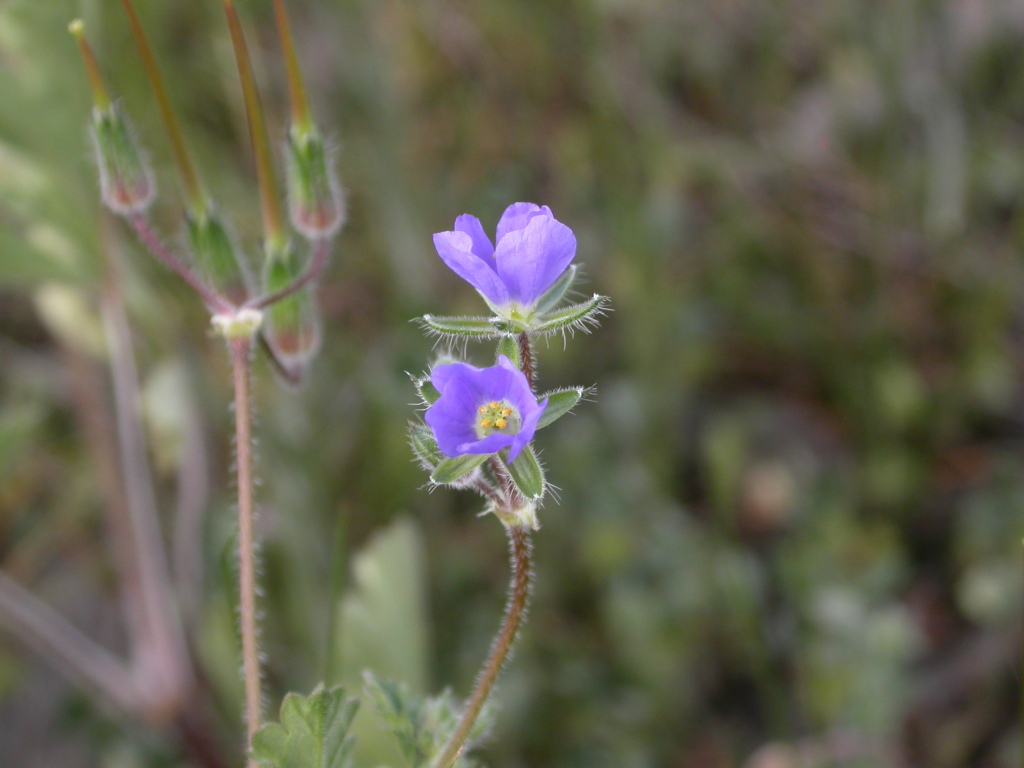Erodium crinitum
Carolin Blue Heron's-billDecumbent to erect annual to c. 40 cm high; stems and petioles pilose to hirsute with eglandular, often retrorse hairs. Leaves (except at very base) 3-lobed to trifoliolate (terminal leaflet largest), lamina broadly ovate in outline, 1.5–5 cm long and wide, leaflets crenate to lobed, pilose to hirsute; petiole 2–13 cm long. Inflorescence (1–)2–6-flowered; peduncle 1.5–6 cm long (to 13 cm in fruit); pedicels 8–30 mm long; sepals 4–6 mm long (to 10 mm in fruit), hirsute with eglandular hairs and sessile or shortly stalked glands; petals 6–10 mm long, blue with white or yellow veins. Mericarps 7–8 mm long, with one shallow, glabrous pit on either side at base of awn, often with a shallow furrow beneath it; awn 4–7 cm long. Flowers Aug.–Mar.
LoM, MuM, Wim, VVP, VRiv, MSB, RobP, MuF, GipP, OtP, Gold, CVU, GGr, DunT, NIS, EGL, EGU, WPro, HSF, HNF, MonT. All mainland States. Introduced as a wool-weed to Europe. Moderately common in north-western Victoria, with scattered occurrences at e.g. Whitfield area, Orbost, Suggan Buggan, St Albans (but not collected in the latter localities in recent times). Grows in mallee scrubs, halophytic shrubland, woodland and grassland communities.
Smith, L.P.; Walsh, N.G. (1999). Geraniaceae. In: Walsh, N.G.; Entwisle, T.J., Flora of Victoria Vol. 4, Cornaceae to Asteraceae, pp. 218–242. Inkata Press, Melbourne.
 Spinning
Spinning


